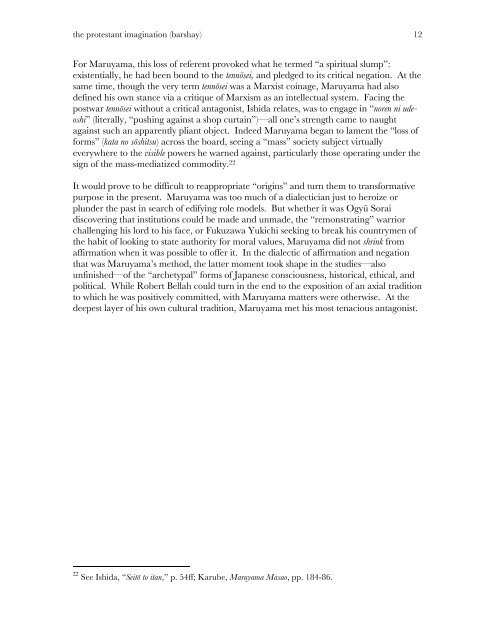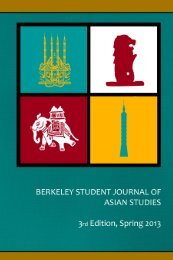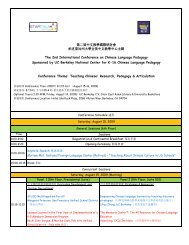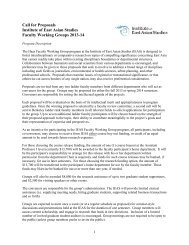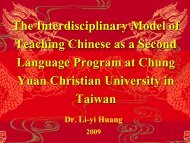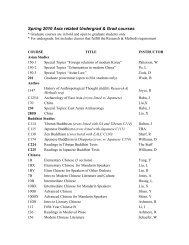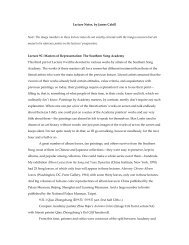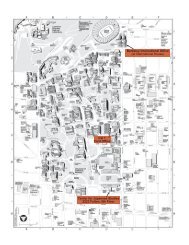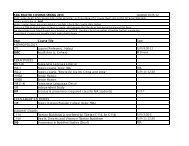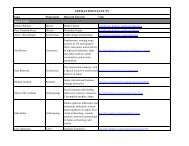short essay - Institute of East Asian Studies, UC Berkeley
short essay - Institute of East Asian Studies, UC Berkeley
short essay - Institute of East Asian Studies, UC Berkeley
- No tags were found...
Create successful ePaper yourself
Turn your PDF publications into a flip-book with our unique Google optimized e-Paper software.
the protestant imagination (barshay) 12For Maruyama, this loss <strong>of</strong> referent provoked what he termed “a spiritual slump”:existentially, he had been bound to the tennōsei, and pledged to its critical negation. At thesame time, though the very term tennōsei was a Marxist coinage, Maruyama had alsodefined his own stance via a critique <strong>of</strong> Marxism as an intellectual system. Facing thepostwar tennōsei without a critical antagonist, Ishida relates, was to engage in “noren ni udeoshi”(literally, “pushing against a shop curtain”)—all one’s strength came to naughtagainst such an apparently pliant object. Indeed Maruyama began to lament the “loss <strong>of</strong>forms” (kata no sōshitsu) across the board, seeing a “mass” society subject virtuallyeverywhere to the visible powers he warned against, particularly those operating under thesign <strong>of</strong> the mass-mediatized commodity. 22It would prove to be difficult to reappropriate “origins” and turn them to transformativepurpose in the present. Maruyama was too much <strong>of</strong> a dialectician just to heroize orplunder the past in search <strong>of</strong> edifying role models. But whether it was Ogyū Soraidiscovering that institutions could be made and unmade, the “remonstrating” warriorchallenging his lord to his face, or Fukuzawa Yukichi seeking to break his countrymen <strong>of</strong>the habit <strong>of</strong> looking to state authority for moral values, Maruyama did not shrink fromaffirmation when it was possible to <strong>of</strong>fer it. In the dialectic <strong>of</strong> affirmation and negationthat was Maruyama’s method, the latter moment took shape in the studies—alsounfinished—<strong>of</strong> the “archetypal” forms <strong>of</strong> Japanese consciousness, historical, ethical, andpolitical. While Robert Bellah could turn in the end to the exposition <strong>of</strong> an axial traditionto which he was positively committed, with Maruyama matters were otherwise. At thedeepest layer <strong>of</strong> his own cultural tradition, Maruyama met his most tenacious antagonist.22 See Ishida, “Seitō to itan,” p. 54ff; Karube, Maruyama Masao, pp. 184-86.


